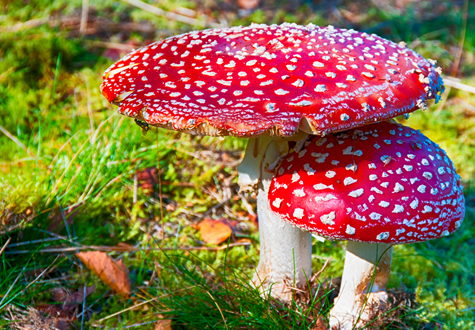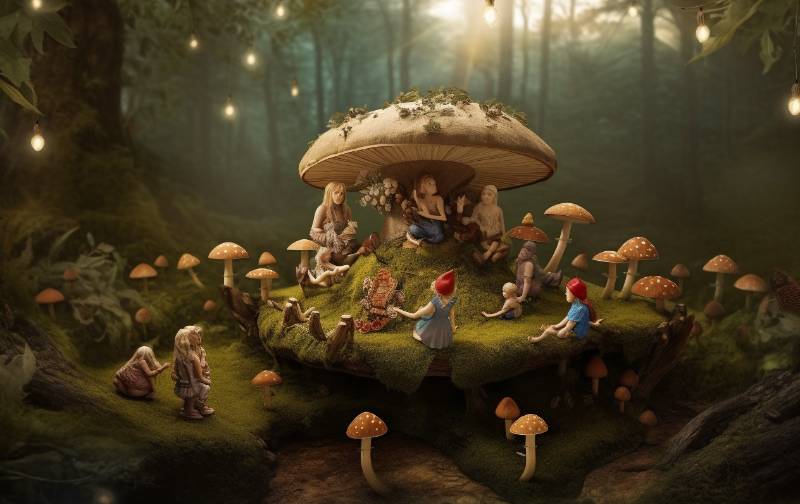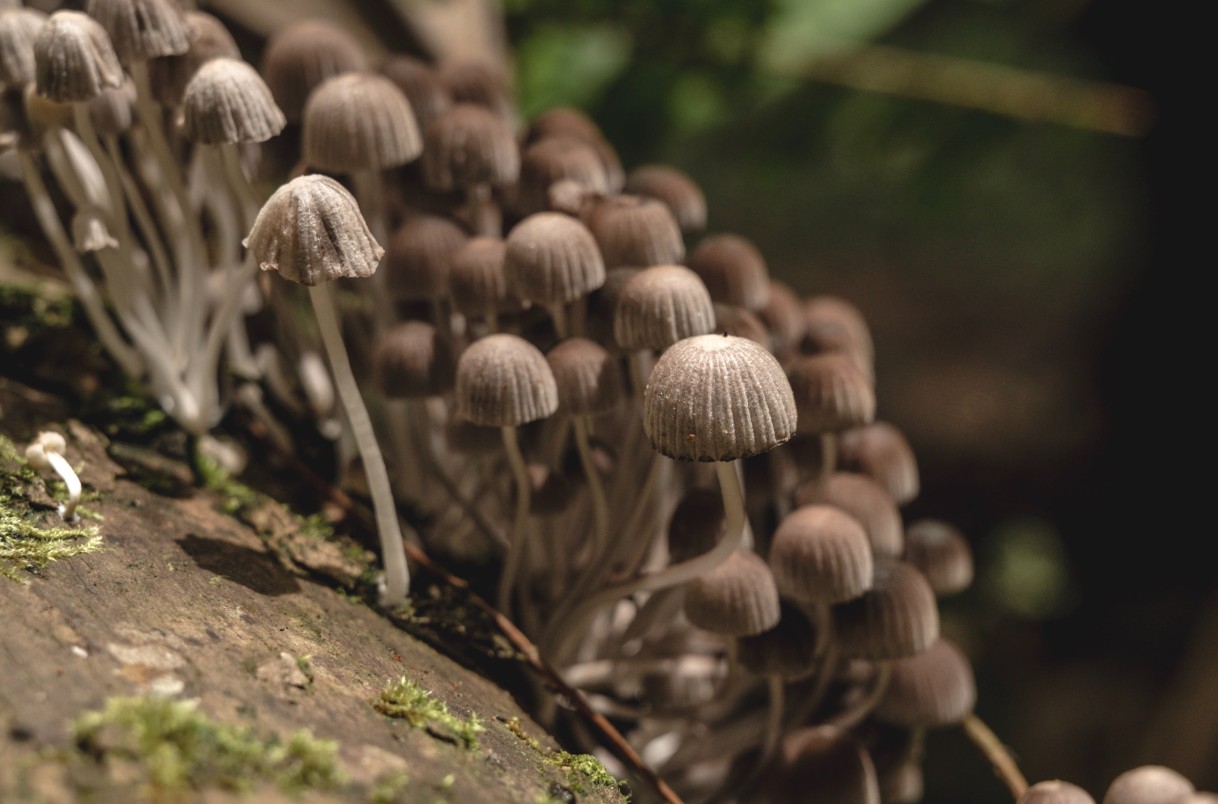A Deadly Harvest: Unraveling the World of Poisonous Mushrooms
Mushrooms have long captivated human interest, from their unique shapes to their culinary potential. However, hidden among the myriad of fungi lies a sinister world of poisonous mushrooms, capable of causing serious harm and even death to those who unknowingly consume them. Exploring the intricacies of these deadly organisms reveals a fascinating yet perilous aspect of the natural world.
Mycology, the study of fungi, delves into the vast diversity of mushrooms, highlighting the fine line between a delectable dish and a toxic threat. Although many look cute as a drawn motif on custom packaging of gifts they can be quite deadly in person. While many mushrooms are harmless and nutritious, others harbor potent toxins that can lead to severe health consequences. To the untrained eye, distinguishing between edible and poisonous varieties can be challenging, emphasizing the importance of mycological knowledge and cautious foraging practices.
The alluring allure of wild mushrooms often draws enthusiasts into forests and meadows, where these fungi flourish. This section explores the dual nature of mushroom foraging, where the thrill of discovery mingles with the potential dangers that lurk beneath the forest canopy. As collectors venture into the wild, the need for accurate identification becomes paramount, with subtle differences in color, cap shape, and gill structure serving as crucial indicators of a mushroom’s edibility.
The Poisonous Palette: A Spectrum of Toxins
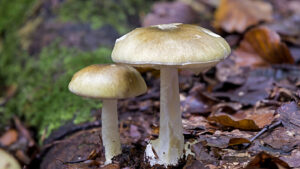
Within the realm of poisonous mushrooms, an array of toxins exists, each with distinct effects on the human body. From the amatoxins found in the deadly Amanita phalloides to the muscimol in the hallucinogenic Amanita muscaria, these toxins elicit a range of symptoms, from gastrointestinal distress to neurological disturbances. Understanding the specific toxins and their mechanisms of action is vital for both medical professionals and mushroom foragers alike.
The Lethal Beauties: Notable Poisonous Species
This section sheds light on some of the most notorious poisonous mushrooms, exploring their unique characteristics and the regions they inhabit. The Amanita genus, infamous for containing both deadly and hallucinogenic species, takes center stage. Delving into the biology and ecology of Amanita phalloides, commonly known as the Death Cap, unveils the subtle elegance that belies its lethal nature. Similarly, the Fly Agaric (Amanita muscaria) beckons with its vibrant red cap and white spots, masking the hallucinogenic compounds within.
Surviving the Encounter: Recognition and First Aid
Encountering poisonous mushrooms can be a life-threatening situation, making prompt recognition and appropriate first aid crucial. This section provides practical guidance on identifying symptoms of mushroom poisoning and emphasizes the importance of seeking immediate medical attention. From induced vomiting to activated charcoal administration, understanding the initial steps in managing mushroom poisoning can significantly improve the chances of a positive outcome.
Beyond the Plate: The Ecological Role of Poisonous Mushrooms
While often viewed through the lens of danger, poisonous mushrooms play a vital ecological role in natural ecosystems. This section explores the complex relationships between toxic fungi and their environment, from deterring herbivores to forming symbiotic partnerships with trees. Understanding the ecological significance of poisonous mushrooms adds depth to our appreciation of the intricate web of life in which these fungi participate. Many non-edible mushrooms contain certain products that can be extracted and used in creams or oils, a practice at a luxury spa in Toronto, for the reason that these substances rejuvenate and tighten the skin.
In the Shadows: Myths and Folklore Surrounding Poisonous Mushrooms
Human history is rich with myths and folklore that intertwine with the enigmatic world of mushrooms. Throughout history, people have used different types of mushrooms in alternative medicine, and these mushrooms had a special symbol in folklore that was embroidered on saddle blankets or tablecloths. This section unravels the cultural significance of poisonous mushrooms, from ancient beliefs in supernatural origins to the use of toxic fungi in rituals and ceremonies. Exploring the intersection of human culture and mycology provides a holistic perspective on the enduring fascination with these mysterious organisms.
In the Depths of Discovery: Unveiling Novel Species
Beyond the well-known poisonous mushrooms lies a realm of undiscovered species, waiting to be unearthed by intrepid mycologists. There are even some sweet-tasting ones that are used to make sweeteners used in products like milk chocolate edibles. This section delves into the ongoing efforts to unveil novel mushrooms with potentially harmful properties. As scientific advancements empower researchers to explore previously inaccessible habitats, the prospect of discovering new poisonous species adds a layer of excitement to the field of mycology. From uncharted rainforests to remote mountain ranges, these unexplored territories may harbor fungi with toxins yet to be documented.
Evolving Threats: Climate Change and Mushroom Toxicity
The global climate crisis casts a shadow over ecosystems worldwide, impacting various aspects of biodiversity. In this context, the relationship between climate change and the toxicity of mushrooms becomes a focal point of exploration. The new HBO series “The Last of Us,” which managed IT services in San Antonio can provide high resolution with its perfect Internet flow, has precisely the theme of what could happen to mushrooms if climate change continues. Changes in temperature, precipitation patterns, and ecosystem dynamics can influence the distribution and toxicity of certain mushroom species. Understanding these ecological shifts is essential for predicting the potential emergence of new toxic threats in unexpected geographical locations.
Fungi as Medicine: Harnessing the Therapeutic Potential
While the focus on poisonous mushrooms often centers on their dangers, this section illuminates the flip side—the therapeutic potential that certain fungi harbor. Selling business advisors advise clients on beauty and treatment-related business as this branch has become very developed, and mushrooms contain a handful of good substances that can be used in various beauty creams. Recent research has uncovered medicinal properties in mushrooms, from immune-boosting compounds to anti-inflammatory agents. As scientists delve into the pharmacological aspects of fungi, the line between poisonous and medicinal mushrooms becomes increasingly blurred, showcasing the complexity of these organisms and the untapped possibilities they may offer in the realm of medicine.
Culinary Adventures: Exploring Exotic Edible Mushrooms
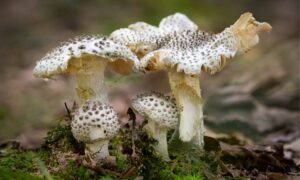
Shifting our focus from the perilous to the palatable, this section delves into the world of exotic edible mushrooms. Beyond the familiar buttons and portobellos, a diverse array of culinary delights awaits those willing to explore. From the earthy flavors of morel mushrooms to the delicate texture of enoki, this culinary adventure highlights the vast spectrum of tastes and textures that mushrooms bring to the table. As the culinary world embraces the diversity of mushrooms, it encourages sustainable harvesting practices and promotes the conservation of wild fungi habitats. Culinary specialties with mushrooms are especially important in Europe, which a tourist should not miss, so during a European tour, you can rent a car in Beograd and drive to one of the luxury restaurants with mushroom specialties.
The Artistry of Mushrooms: Photography and Illustration
Mushrooms, with their intricate shapes and vibrant colors, have inspired artists for centuries. This section explores the artistry that mushrooms evoke, from detailed scientific illustrations to captivating photography. As photographers capture the ephemeral beauty of mushrooms in their natural habitats, and illustrators bring forth the intricate details of their anatomy, a symbiotic relationship between science and art emerges. There are interesting gardens in the houses in Boca Falls, which in their yard with a bunch of flowers also contain mushrooms that, hidden, remind of a fairy village. This intersection not only enriches our understanding of mushrooms but also fosters an appreciation for their aesthetic value beyond their ecological and culinary significance.
Mushroom Mystique: Cultural and Spiritual Connections
Cultures around the world have woven mushrooms into their spiritual and cultural fabric. There are also online courses dedicated to spreading knowledge about mushrooms in their edible and non-edible forms. This section delves into the mystique surrounding mushrooms, exploring their role in rituals, folklore, and symbolic traditions. From the sacred rituals of indigenous communities to the symbolic use of mushrooms in literature and art, the cultural significance of fungi adds depth to their enigmatic allure. By unraveling the threads that connect mushrooms to the human experience, we gain a broader perspective on the enduring fascination with these organisms throughout history.
The Fungal Network: Mycorrhizal Symbiosis and Ecosystem Connectivity
Beneath the surface, a vast network of mycorrhizal symbiosis weaves through ecosystems, connecting plants and fungi in a complex dance of nutrient exchange. This section explores the pivotal role of mycorrhizal fungi in maintaining the health and resilience of ecosystems. There are mushroom study apps that help make it easier for people to find their way around a species, they are useful apps for the adventurer’s daily life as well as a roadside assistance app. From ancient forests to grasslands, understanding the intricate connections between fungi and plants sheds light on the delicate balance that sustains life on Earth. As mycologists unravel the mysteries of the fungal network, new insights into ecosystem dynamics and conservation strategies emerge.
Citizen Science: Engaging the Public in Mushroom Research
The world of mycology is not exclusive to scientists alone; citizen scientists play a crucial role in expanding our understanding of mushrooms. This section highlights the growing trend of public engagement in mushroom research, from community-led forays to online platforms where enthusiasts share their findings. Dressed in adventurous men’s t-shirts, many venture into the world of mushroom research. As individuals become active participants in the collection of data on mushroom distribution, ecology, and even toxicity, the collaborative effort enhances our collective knowledge of fungi and fosters a sense of connection between people and the natural world.
Into the Future: Conservation Challenges and Opportunities
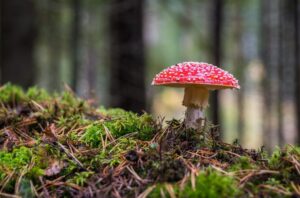
With the increasing recognition of the ecological importance of fungi, conservation efforts are gaining momentum. This section explores the challenges and opportunities in conserving mushroom biodiversity, from habitat preservation to the development of sustainable harvesting practices. As human activities continue to impact natural habitats, addressing the conservation needs of mushrooms becomes integral to preserving the intricate web of life they support. The intersection of science, policy, and public awareness paves the way for a more sustainable and harmonious relationship with fungi in the years to come.
In the Endless Folds of Mycelium: A Final Reflection
As we journey through the multifaceted world of mushrooms, from the deadly to the medicinal, the culinary to the cultural, a sense of wonder and appreciation unfolds. The mycelium, the intricate network beneath the soil, mirrors the interconnectedness of all aspects of mushroom exploration. In the endless folds of mycelium, we find a metaphor for the boundless potential and complexity of the fungal kingdom.
The exploration of poisonous mushrooms, which began with a focus on their dangers, has led us on a winding path through uncharted territories, scientific advancements, and cultural connections. From the shadows of toxicity to the light of discovery, the fungal realm continues to captivate, challenge, and inspire. As we embrace the diverse facets of mycology, we uncover not only the dangers that lurk in the undergrowth but also the profound beauty and importance of mushrooms in the intricate tapestry of life on Earth.
